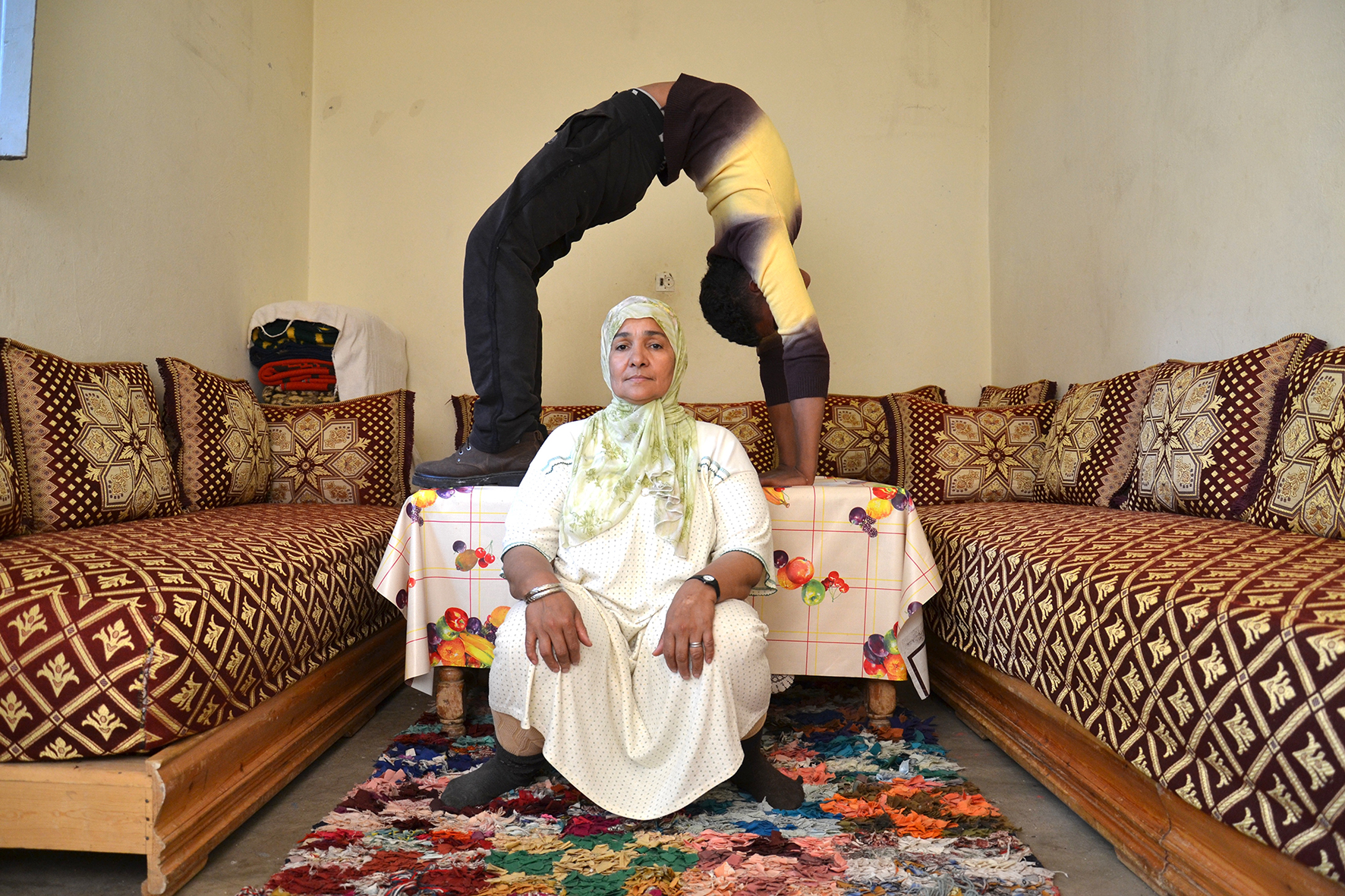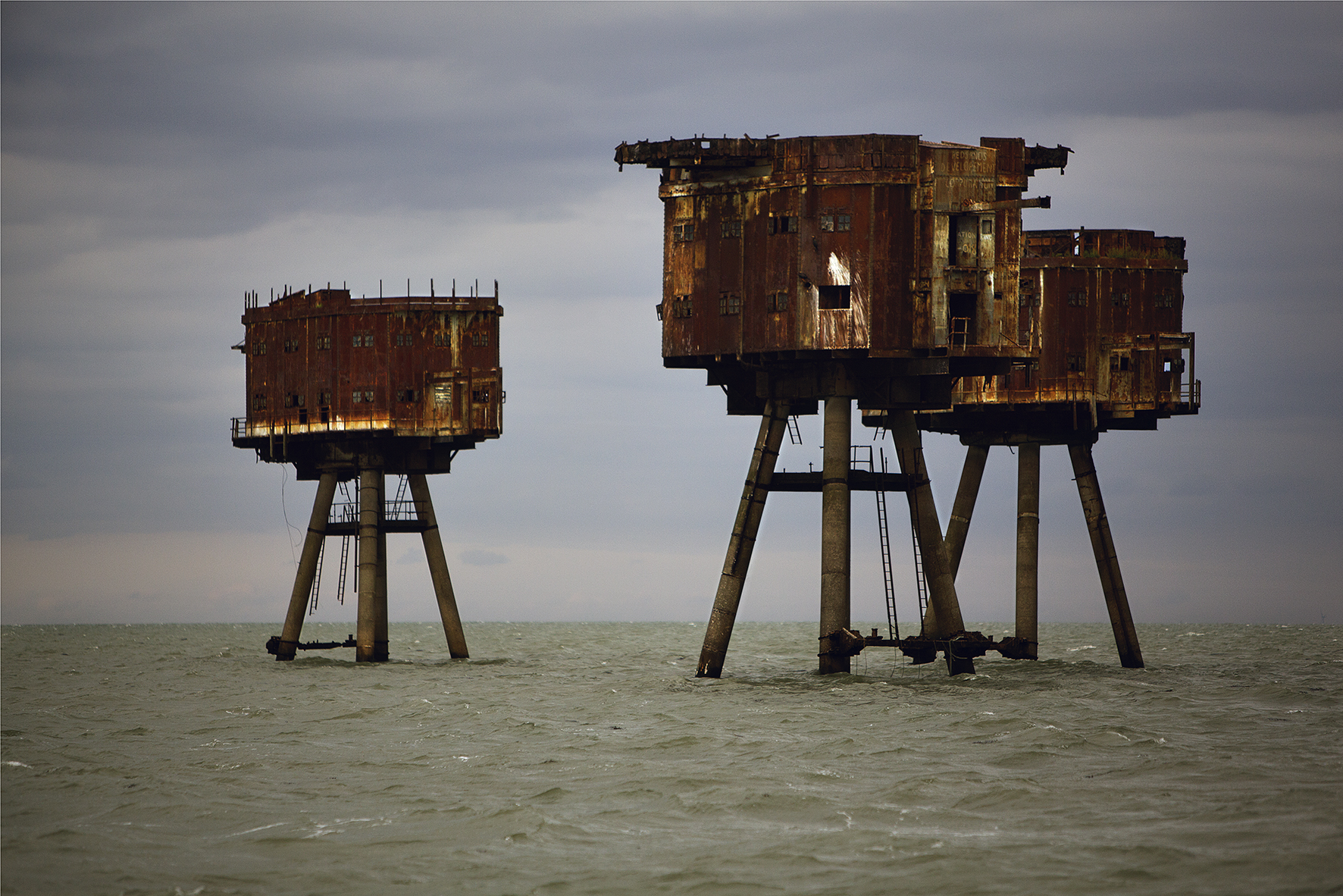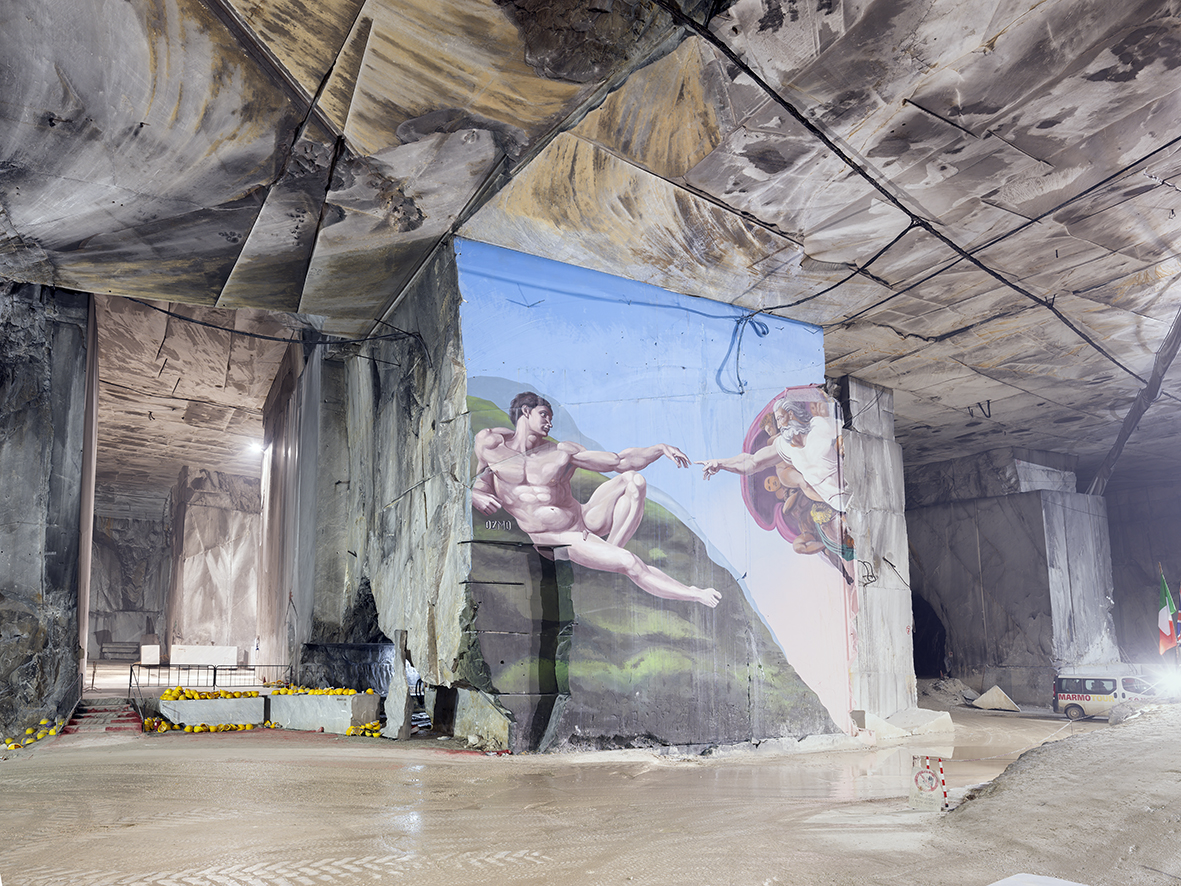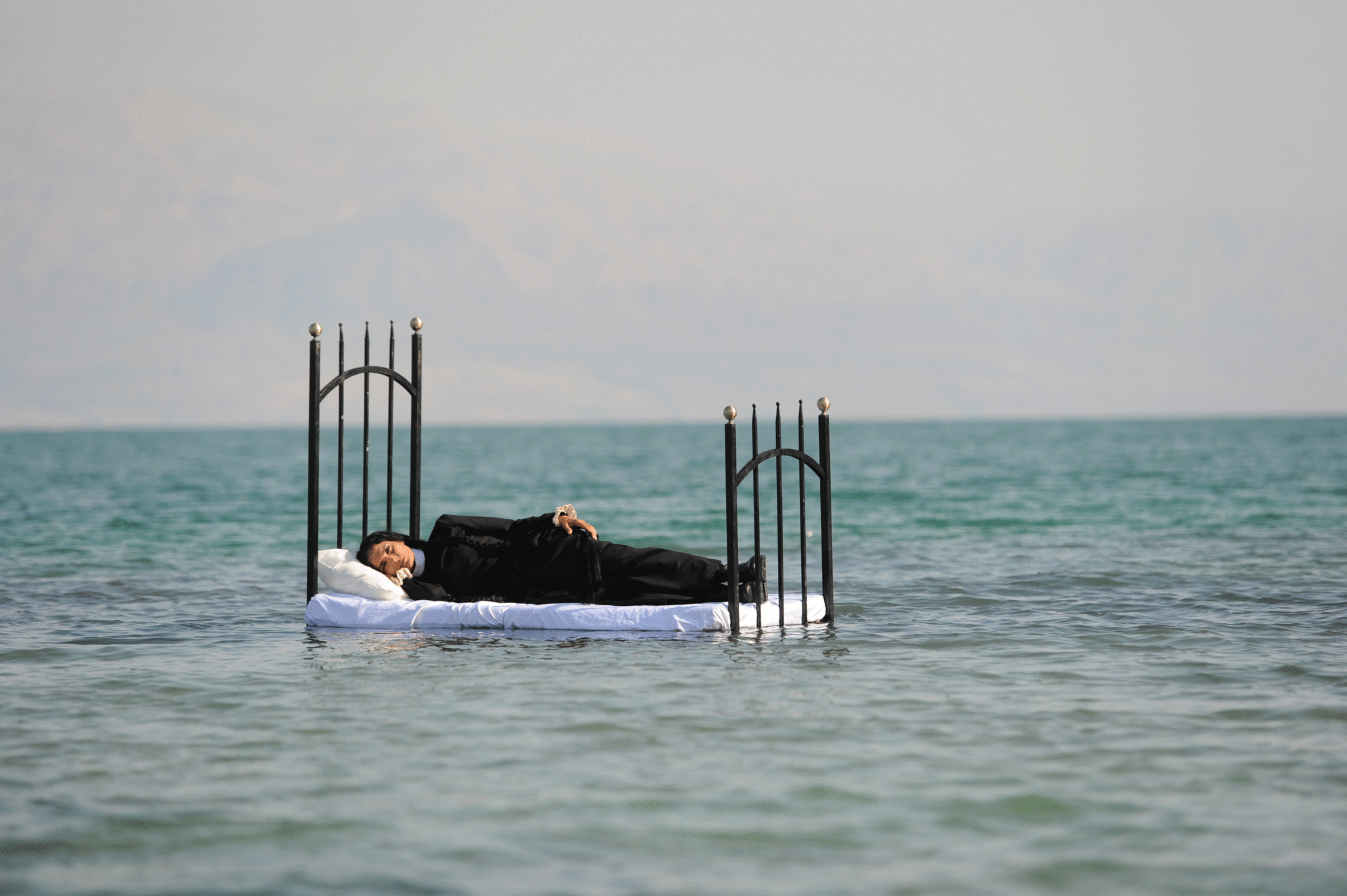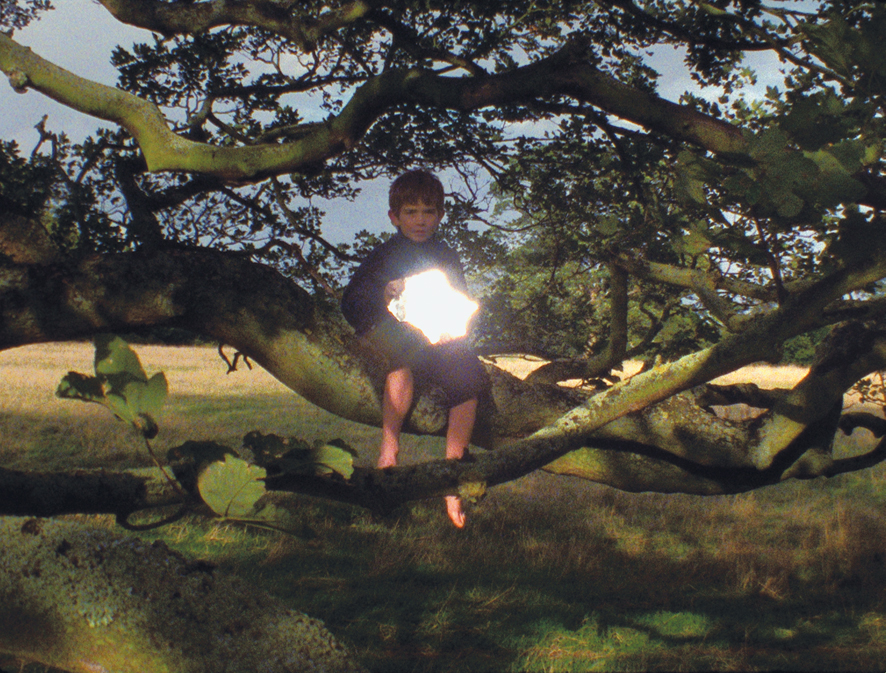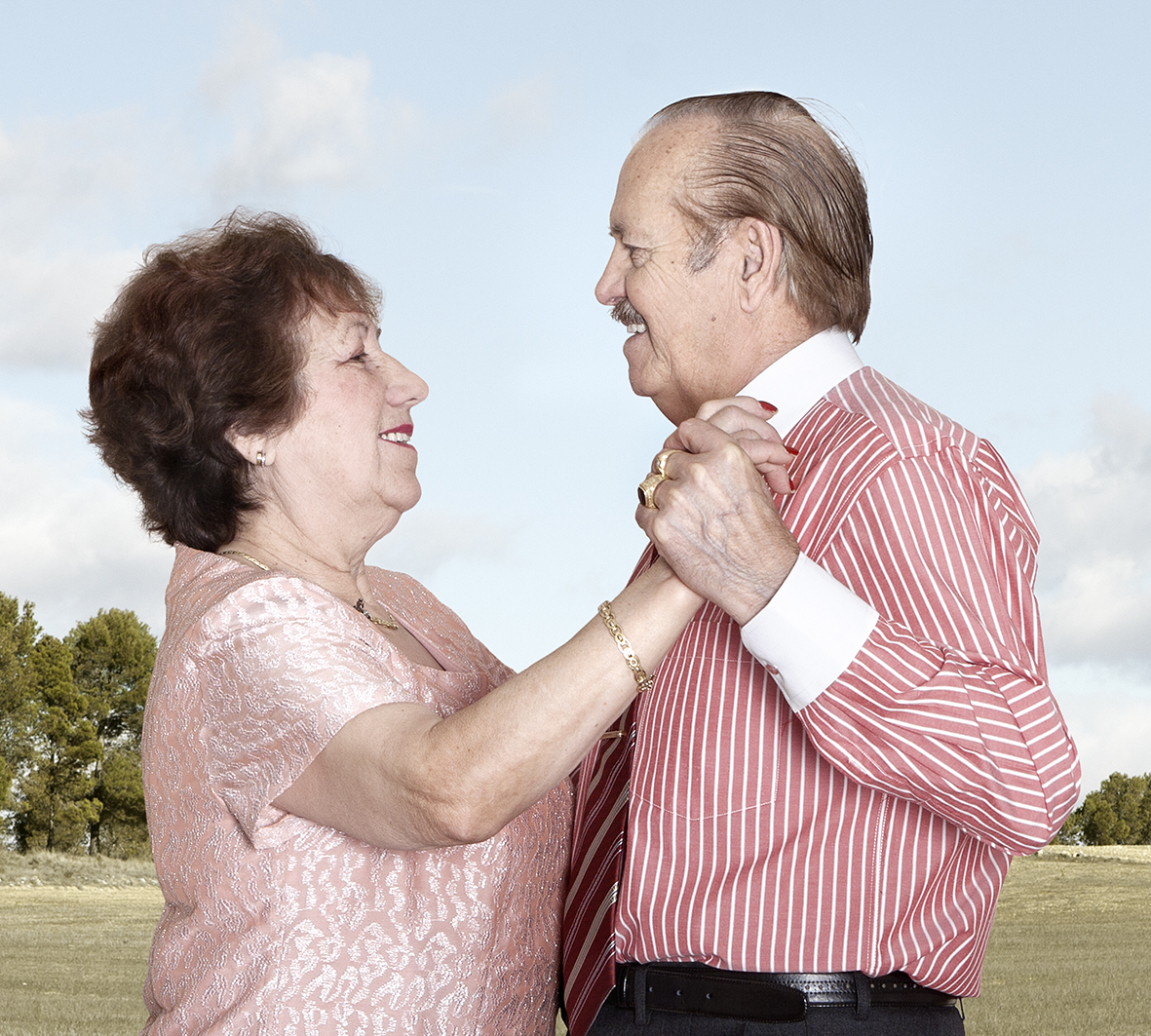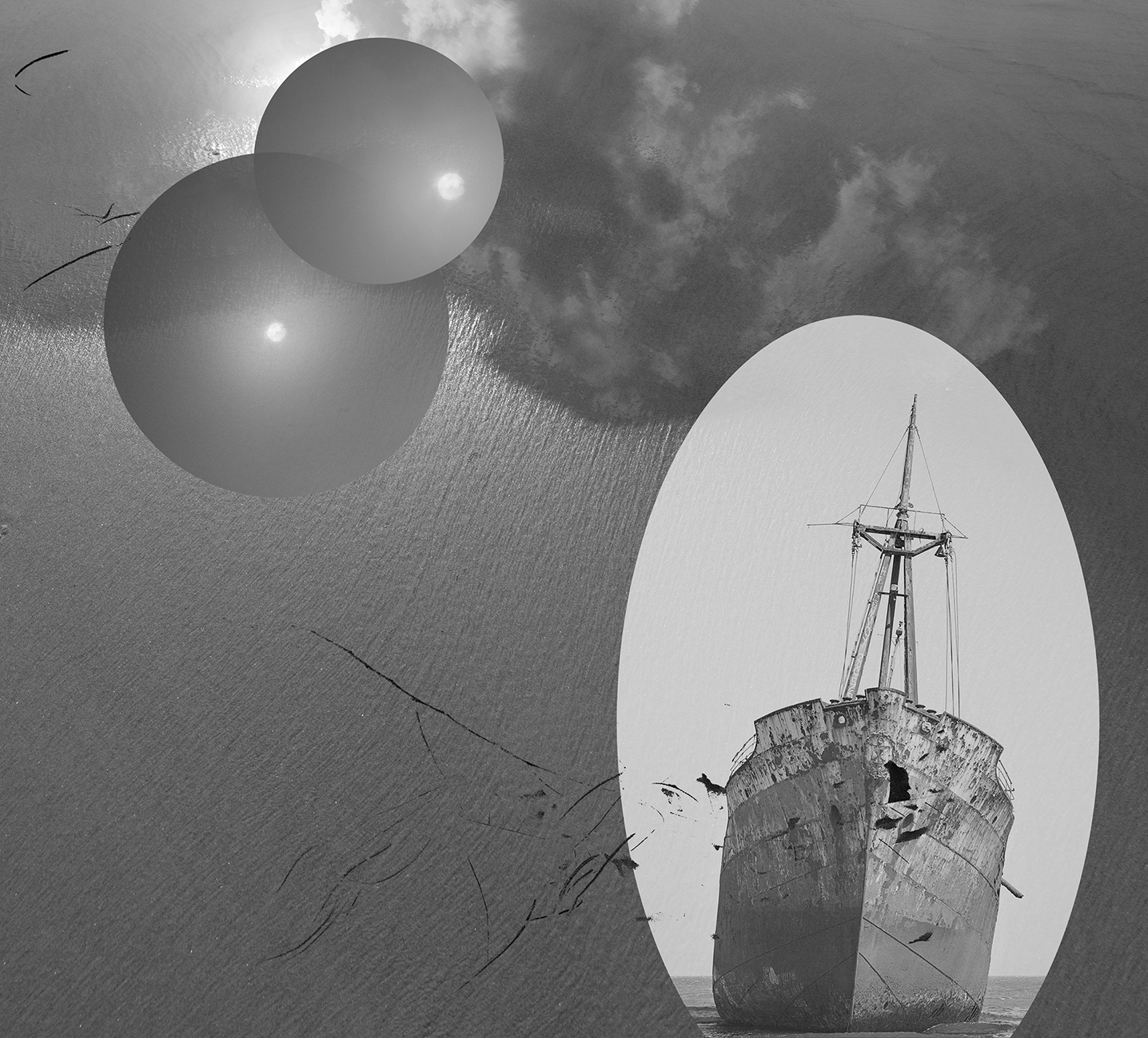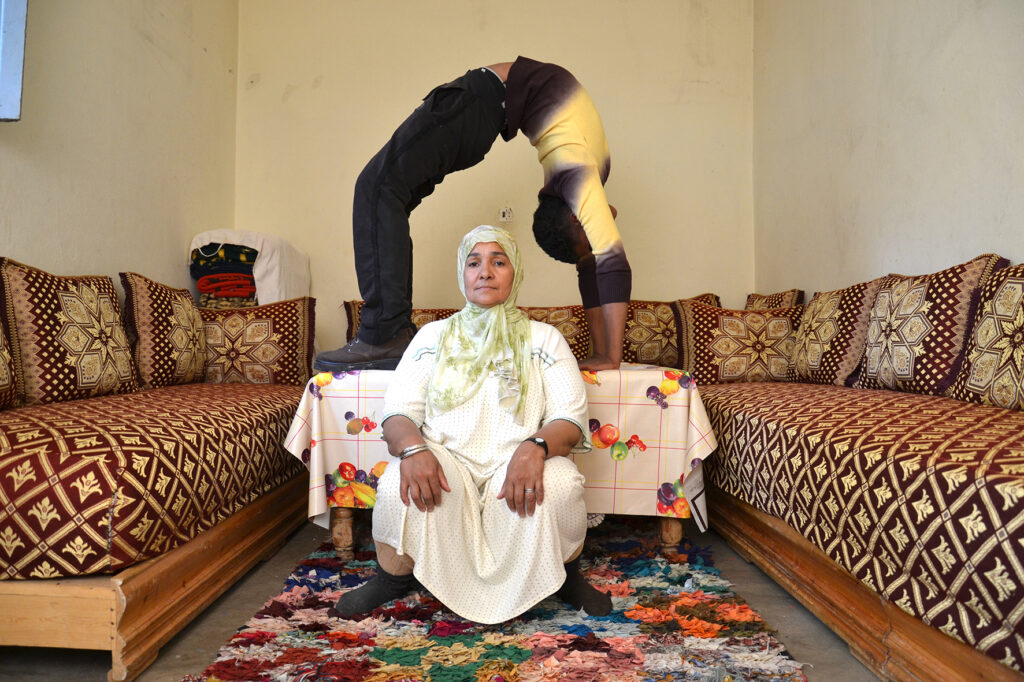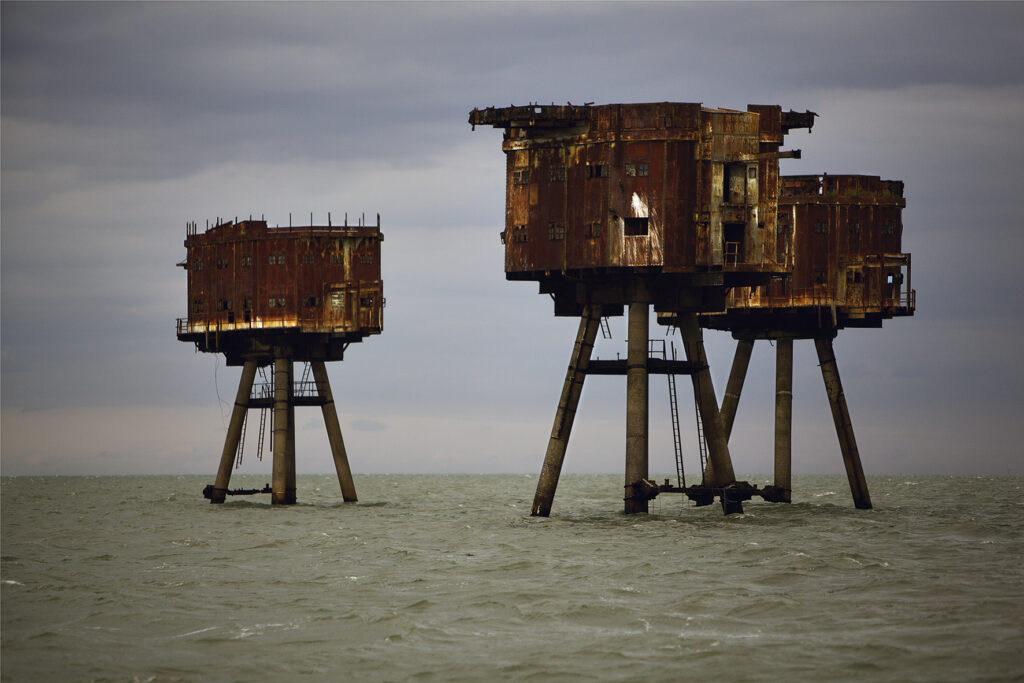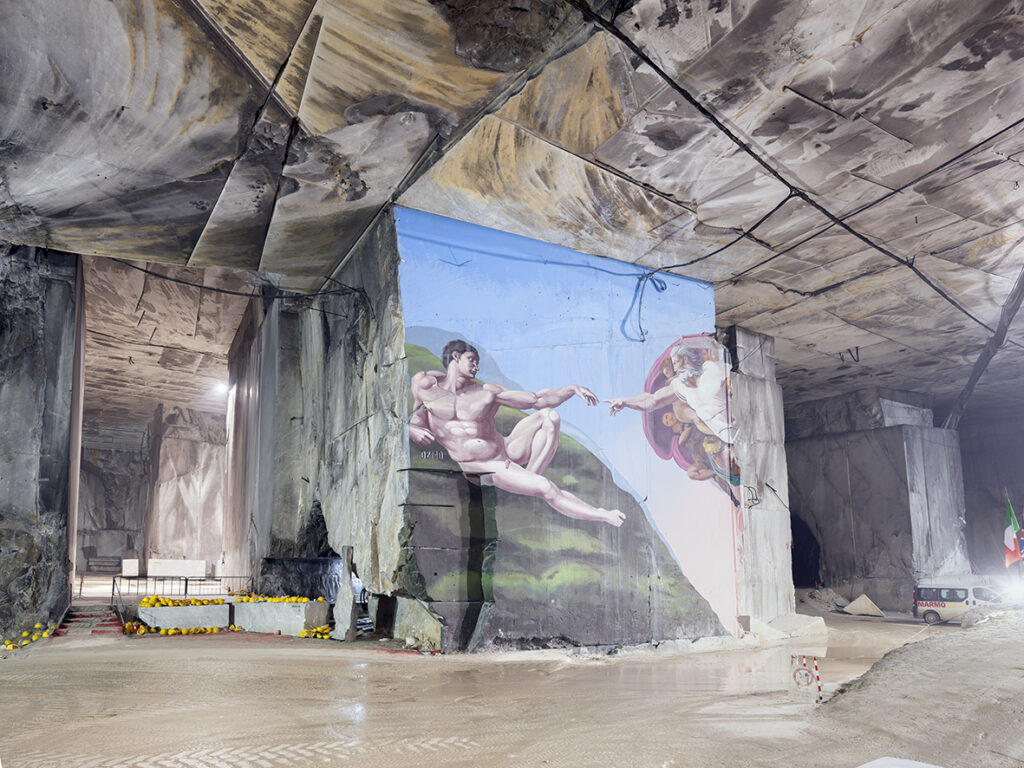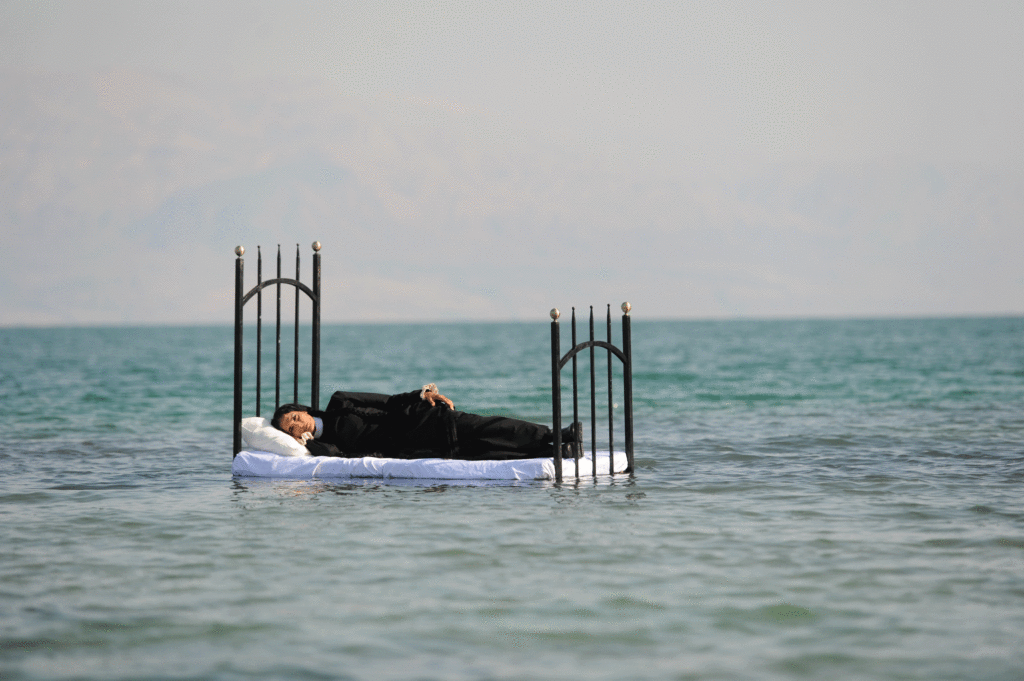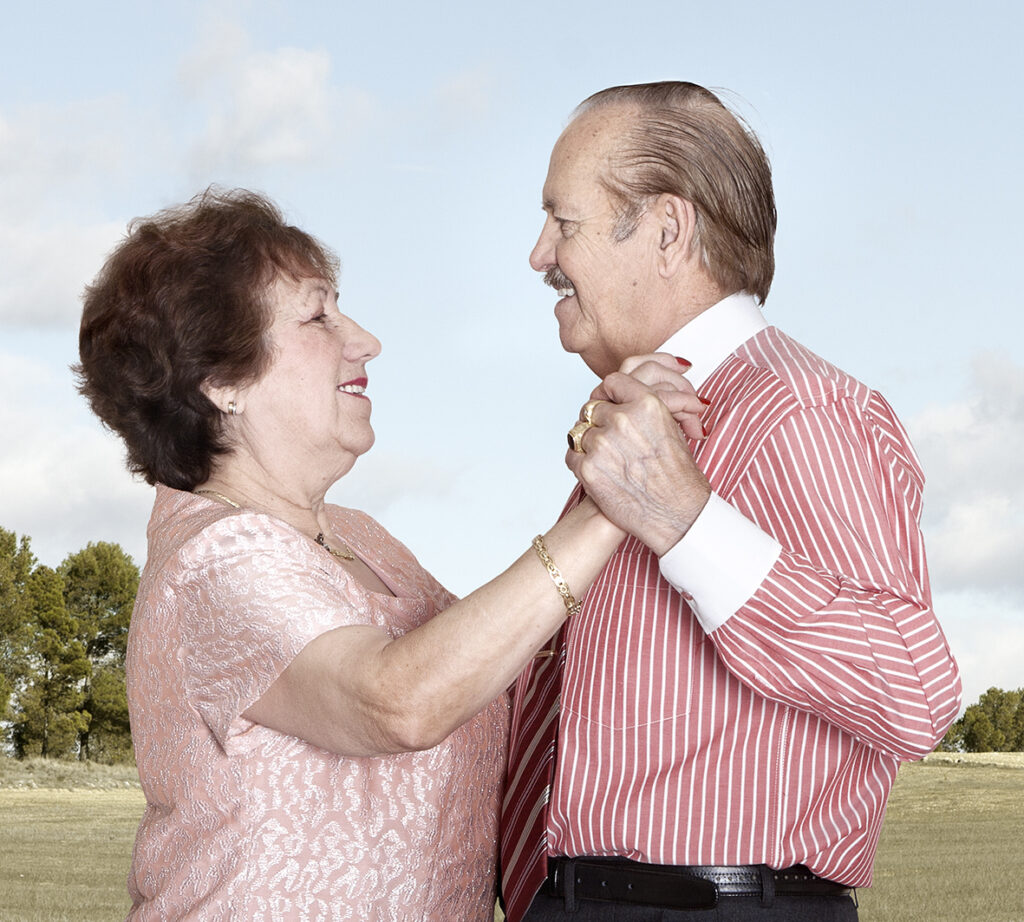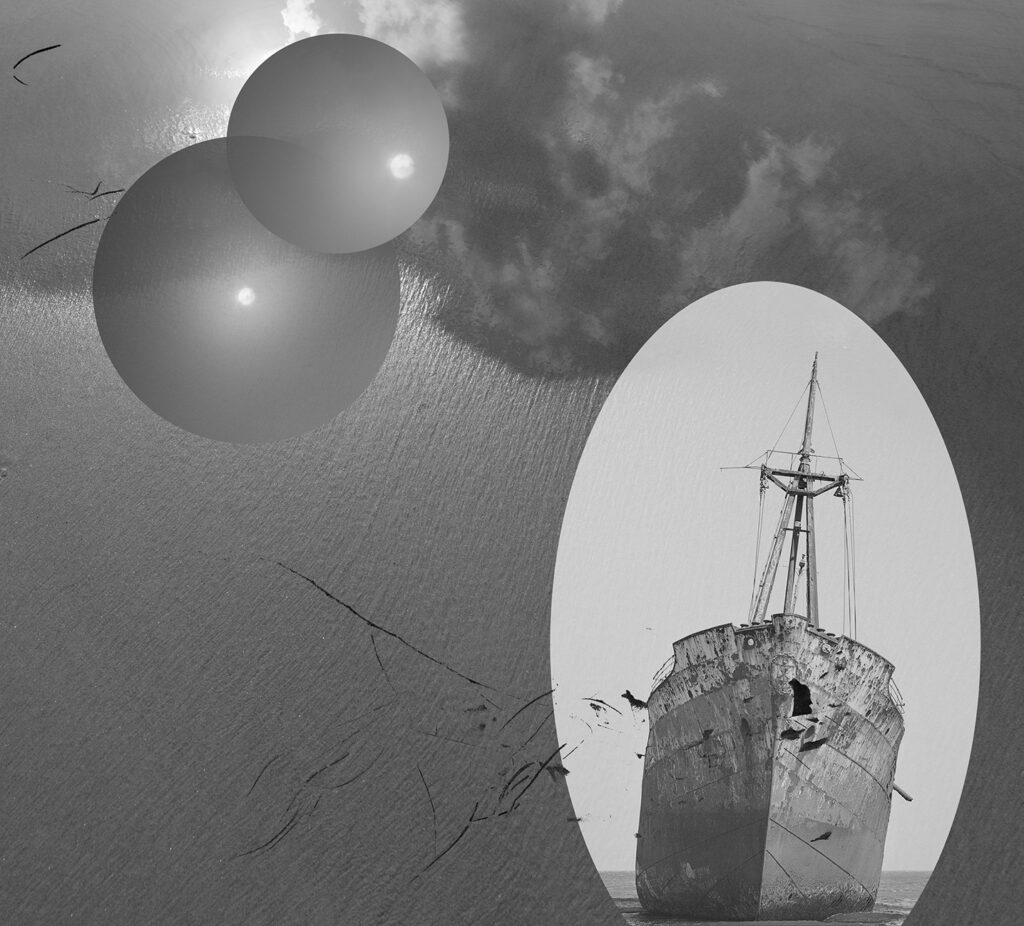Photomenta – a large-scale photography exhibition features the works of dozens of participants from numerous Mediterranean countries. The exhibition extends throughout the museum, unfurling like a maritime map or fishing net, with its different sites serving as port cities from which one can sail throughout the Mediterranean.
MUZA, the Eretz Israel Museum, Tel Aviv, is pleased to present the first Photomenta – a large-scale photography exhibition opening at the museum. The exhibition, which will take place every five years, presents hundreds of works by dozens of participants from numerous Mediterranean countries. Serving as a bridge that extends over seas and peoples, borders and political conflicts, the photographs on display offer a mental, artistic and narrative point of encounter with the “others” in our vicinity. The exhibition extends throughout the museum galleries, pavilions and archaeological garden, unfurling like a maritime map or fishing net. The exhibition’s various sites serve as port cities, while the series of photographs on display appear alongside the museum’s archaeological and historical treasures.
Participants
Raida Adon (Acre, Israel); Oded Balilty (Israel); Laetizia Battaglia (Italy); Raed Bawayah (The Palestinian Authority/France); Orit Adar-Bechar (Israel); Hicham Benohoud (Morocco); Noa Ben-Nun Melamed (Israel); Primož Bizjak (Slovenia); Nadir Bucan (Turkey); Itamar Doari (Israel); Faten Gaddes (France/Tunisia); Ana Galan (Spain); Maya Geller (Israel); Dor Guez (Jaffa, Israel); Raafat Hattab (Jaffa, Israel); Oded Hirsch (Israel); Marie Hudelot (France-Algeria); Max Juhasz (Crotaia); Yoram Kupermintz (Israel); Nicolas Lambouris (Cyprus); Dana Levy (Israel); Luca Locatelli (Italy); Adrian Paci (Albania/Italy); Maria Pansini (Italy); Theodor Papadakis(Greece); Francesca Piqueras (France); David Pisani (Malta); Siniša Radulović (Montenegro); Ritty Tacsum (Malta); Dafna Tal (Israel); Vertigo (Israel); Hinda Weiss (Israel); Ammar Younis (Kafr Ara, Israel); Tamir Zadok (Israel); Almin Zrno (Bosnia and Herzegovina)
Human and sea routes
Within the framework of Photomenta, the Kadman Numismatic Pavilion hosts several contemporary works that explore the Mediterranean in a digital, metaphorical manner. The digital sphere enables us to move between reflections concerning the sea and image-processing programs that offer an open horizon for an imaginary journey among the waves. The temporary identity cards given to Palestinian immigrants from Syria attest to the peregrinations and refugee status of their holders. Filling the exhibition space are the sounds of prayers associated with the three religions, calling to mind the prayers of those at sea. Together with the permanent display, they tell a story about place and identity consolidated along the shores of the Mediterranean – the story of human and maritime trajectories.
The Kadman Numismatic Pavilion features the museum’s rich and unique coin collection. This pavilion, which tells the story of ancient monetary exchanges in the ports of Mediterranean countries, serves as the “home port” from which the Photomenta exhibition sets sail.
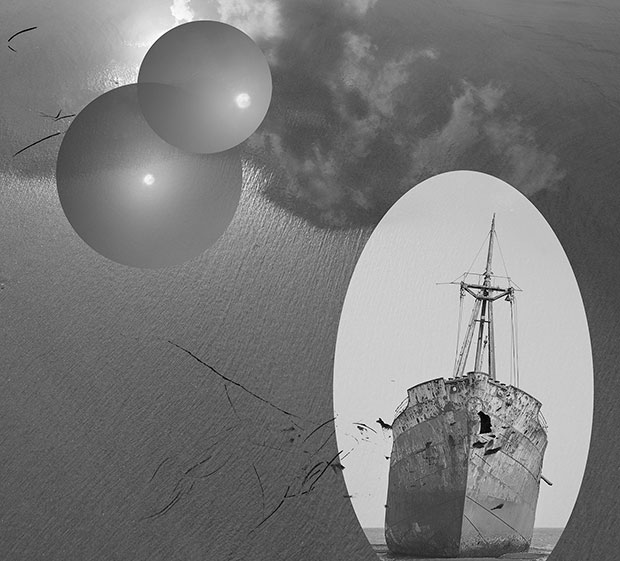
Noa Ben Nun Melamed (Israel), Between Water and Water, 2020
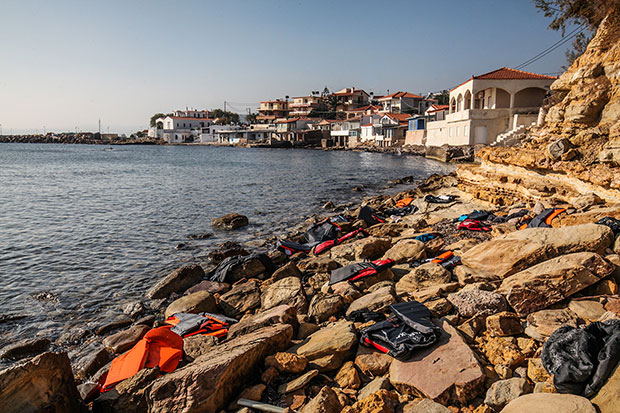
Ammar Younis (Kfar Ara), Survival of the Fireflies, 2016
A Journey Exploring Human Life
A Journey Exploring Human Life
Within the framework of Photomenta, the Alexander Museum of Postal History and Philately is hosting photographs and video works that invite viewers to embark on a journey in the footsteps of various people and their homes, families and memories. The works include documentary photographs of everyday life in Libya, Turkey, the Palestinian Authority and Morocco, as well as artworks from Greece, Morocco, Israel and Tunisia. The documentary photographs feature mainly portraits of “mountain and village people” – captured during anthropological photography expeditions to communities who seem to live lives frozen in time. The art photographs of the Israeli and French photographers include references to the private immigration histories of the photographers, while the photograph from Greece alludes to metaphorical experiences of loneliness and alienation associated with the digital age and the loss of physical memory.
Between the Continents
Within the framework of Photomenta, this display combines documentary photographs of everyday life in Palermo, Sicily, centered on members of the Sicilian mafia; portraits of African refugees working in Bari, Italy; and typological photographs of the ancient part of Valletta, the capital of Malta. The video work from Montenegro symbolically echoes these three series, and Israeli viewers may find in it an echo of the memory of the Holocaust.
The Alexander Museum of Postal History and Philately is dedicated to the history of local postal services – the means of communication that connected people throughout the Mediterranean sphere – against the backdrop of the historical, social and political changes occurring in the region over time.
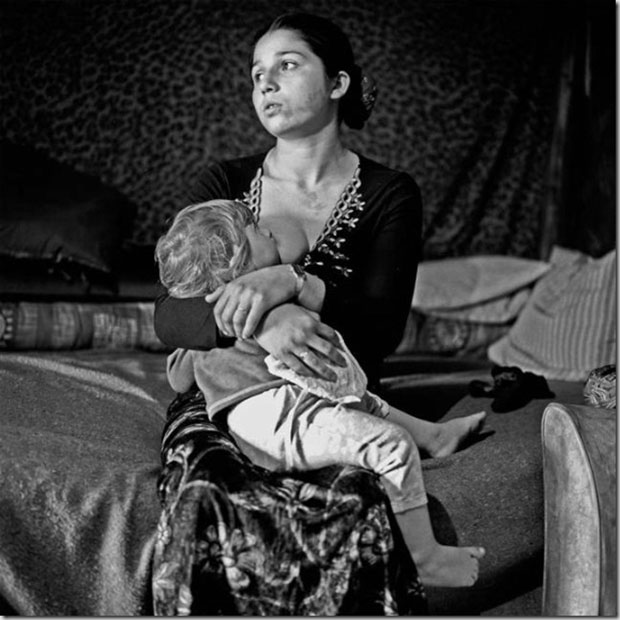
Raed Bawayah (Palestinian Authrity/France), Safe Trip (Roma woman nursing her son), France, 2006-2010
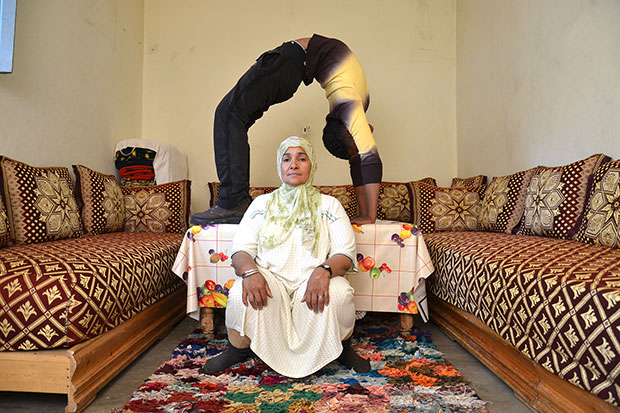
Hicham Benohoud (Morocco), Acrobatics, 2017
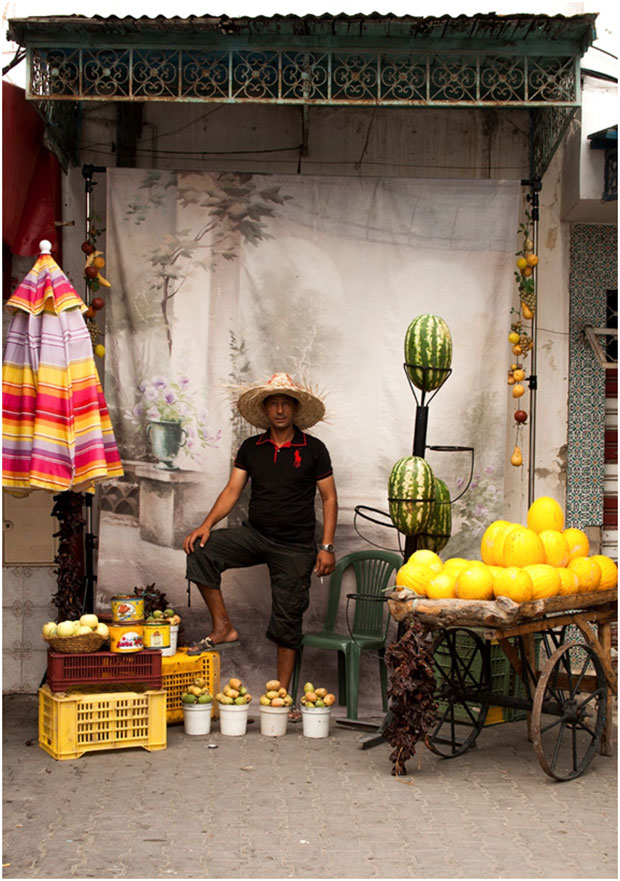
Faten Gaddes (Tunisia/France), Trompe l'oeil, from the series Travelogue, 2012-2021
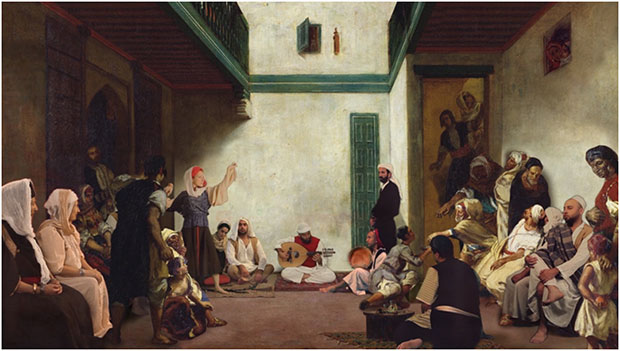
Tamir Zadok (Israel), Jewish Wedding in Morocco, video, 2:15 minutes, 2014
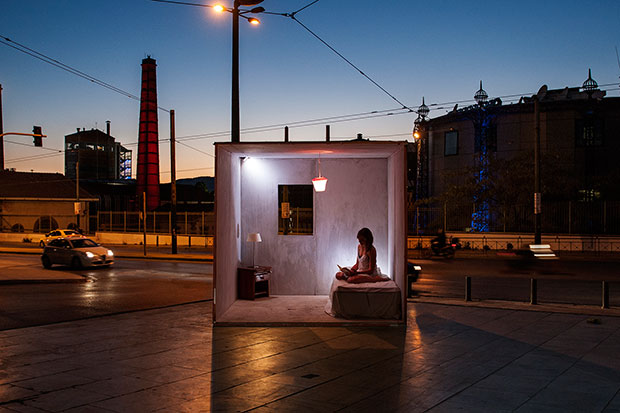
Theodor Papadakis (Greece), Home Again, 2016
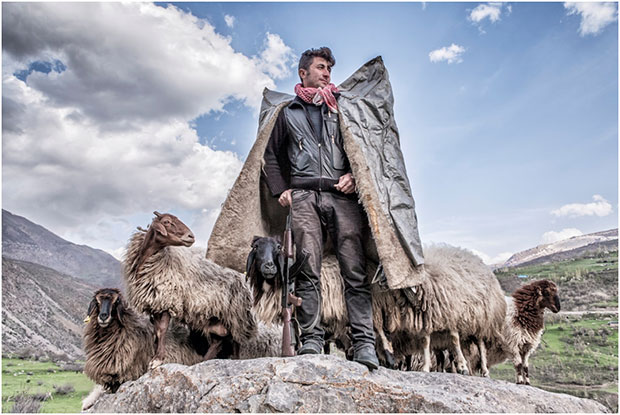
Nadir Buçan (Turkey), Under the Shadow of the Sun, 2011-2021
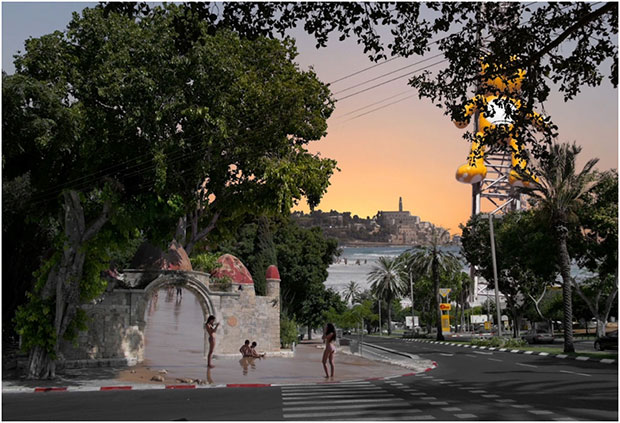
Hinda Weiss (Israel), Postcard from Tel Aviv, digital collage, video, 8:23 minuets, 2015
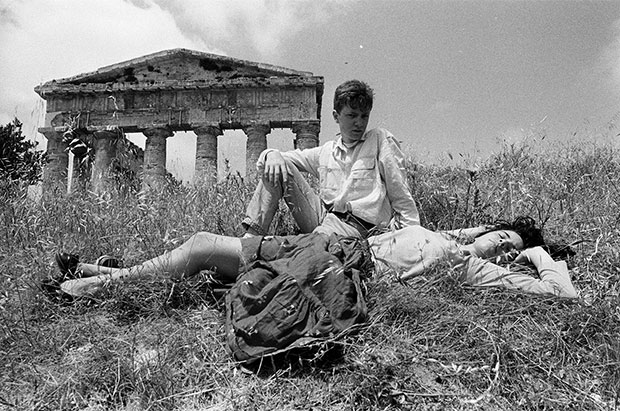
Letizia Battaglia (Italy), Photography as a Life Choice, 1975-1995
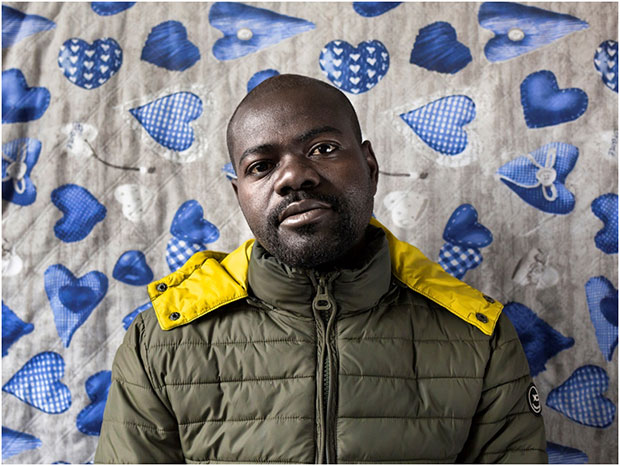
Maria Pansini (Italy), Blanket, 2017
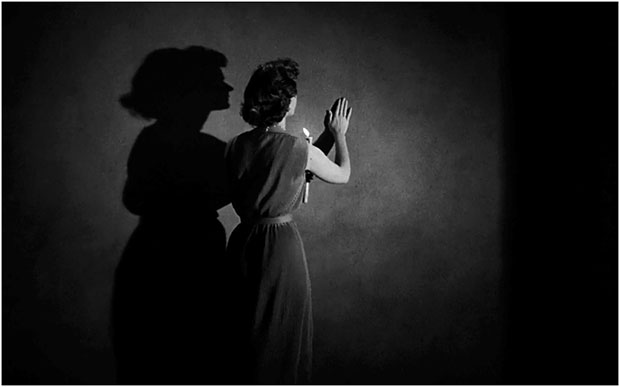
Siniša Radulović (Montenegro), Things We Haven't Found inside the Walls, video, 5:43 minutes, 2015
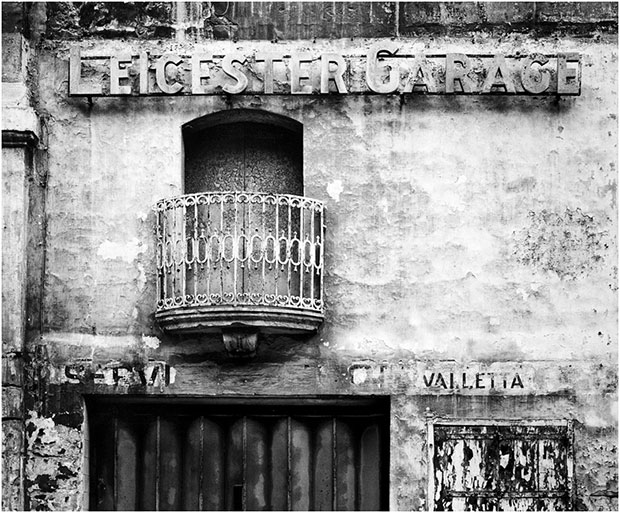
David Pisani (Malta), Vanishing Valletta, 1982-2011
Landscape Images
The photographic series in this pavilion feature landscape scenes by photographers from France, Malta, Croatia and Israel. This selection of works includes seascapes, sunken ships, drilling towers and historical maritime bunkers. The works are all concerned with the encounter between the human body and botanical or maritime landscape images that raise gender-related and aesthetic questions, while dialoguing with the ceramic figurines in the permanent collection. One series is concerned with memories of imagined landscapes, related to a family photograph album that was lost in a war. A video work displayed above a number of monumental vessels features sea waves washing over the statue of a mythological figure submerged in the sand, and resonating with the waves of memory and oblivion associated with Mediterranean mythology.
The Ceramics Pavilion is devoted to the ceramic material, whose prevalence and flexibility allowed for the creation of a range of functional vessels and artistic or ritual objects. The durability and prevalence of ancient ceramic vessels sheds light on everyday life in ancient times.
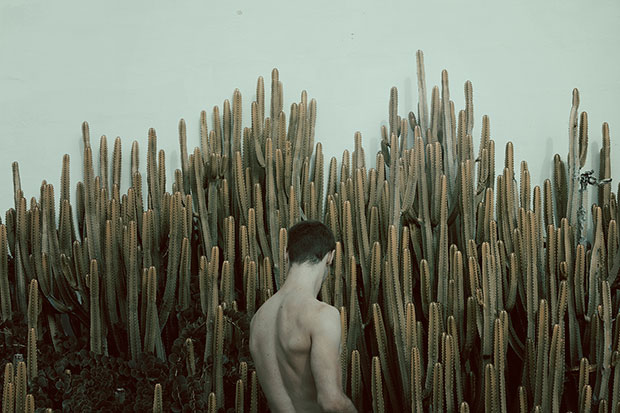
Ritty Tacsum (Malta), Random Encounters, 2018-2020
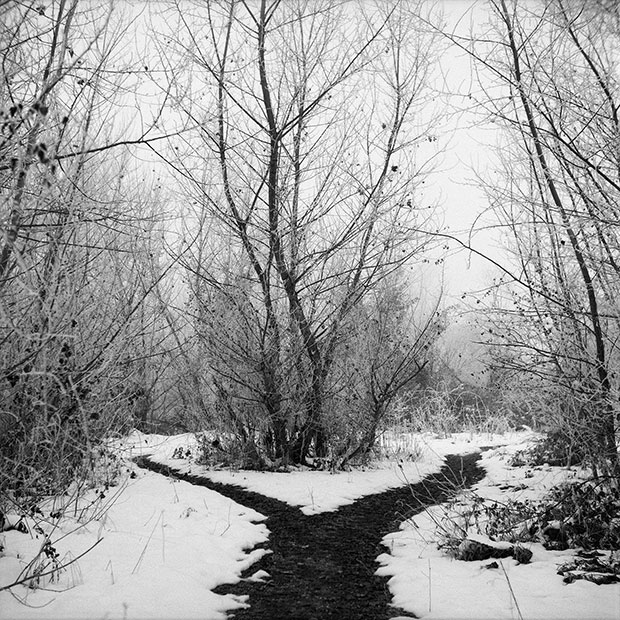
Max Juhasz (Croatia), Universal Memories, 1999-2019
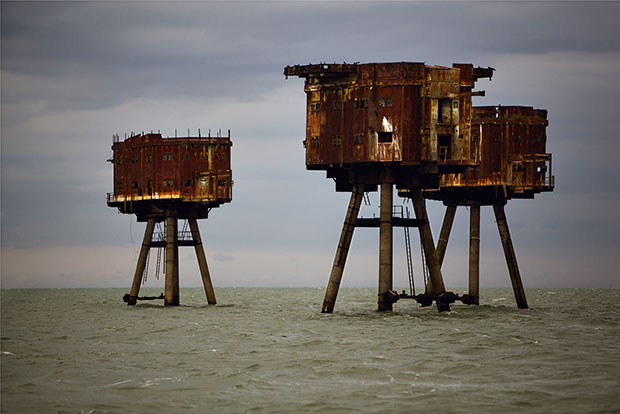
Francesca Piqueras (France), Panic point, Peru, 2015
Mines and Quarries
The photographs at this “port” provide us with two different photographic perspectives – a Bosnian perspective and an Italian one – on the marble quarries in Carrara, Italy. These quarries first became active in the second century BCE. They produce 30 different types of marble, most characterized by a white-gray-bluish hue. These quarries also supplied the raw material for Renaissance sculptures, including those by Michelangelo and Donatello, and for important buildings around the Mediterranean basin, including the Hagia Sophia in Istanbul and the Notre Dame Cathedral in Paris, as well as St. Peter’s Basilica and the Pantheon in Rome. Today, the quarries cater mainly to clients including banks, casinos, Persian Gulf states, and Saudi Arabia. The photographs on display offer a glimpse of the spirit and matter involved in mining and quarrying processes throughout the history of the Mediterranean region.
The Nehushtan Pavilion presents processes and facilities related to mining and smelting copper during different periods, based on the archaeological excavations in Timna and the Arava. These processes are presented as the first chapter in the grand story of progress from the Stone Age to the modern age.
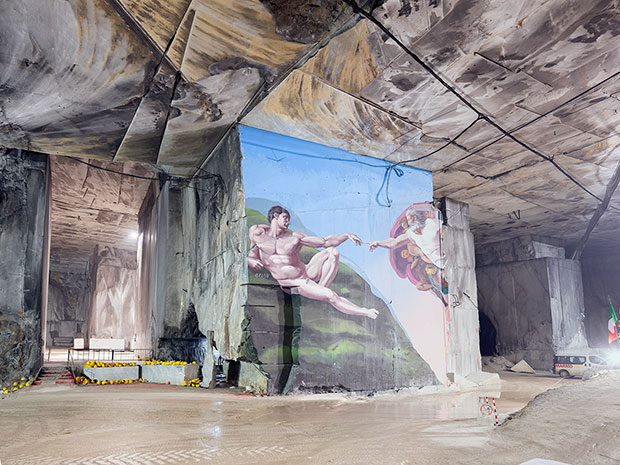
Luca Locatelli (Italy), White Gold, Carrara Quarry, 2018
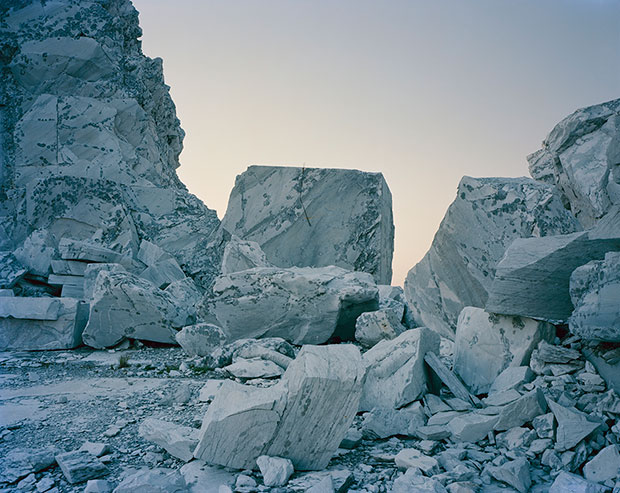
Primož Bizjak (Slovenia), Alpi Apuani, Carrara Quarry, 2014-2017
Signs and symbols
The photographs presented in the Migdal Gallery within the framework of Photomenta are concerned with archaeological monuments in Israel and Cypress; enlarged copies of plant photographs identified with local cities in the early 20th century; mythological stories and allegorical memories of figures from Algiers; and two-dimensional models of countries that are not represented by the photographers participating in the exhibition, including: Egypt, Libya, Syria, Lebanon and Gaza (The Palestinian Authority).
The works on display in the Migdal Gallery serve as a point of reference, while metaphorically mapping a number of Mediterranean landscapes. The gallery’s second floor serves as an observatory overlooking the landscape -the Mediterranean Sea to the west, Tel Aviv and its environs, and the Samarian Mountains in the East.
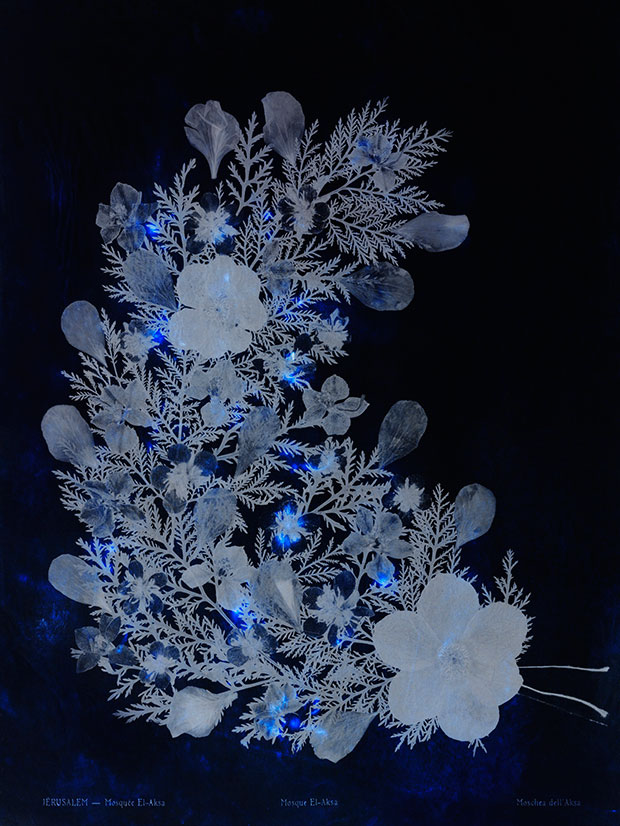
Dor Guez (Jaffa, Israel), Lilies of the Field, 2018-2019
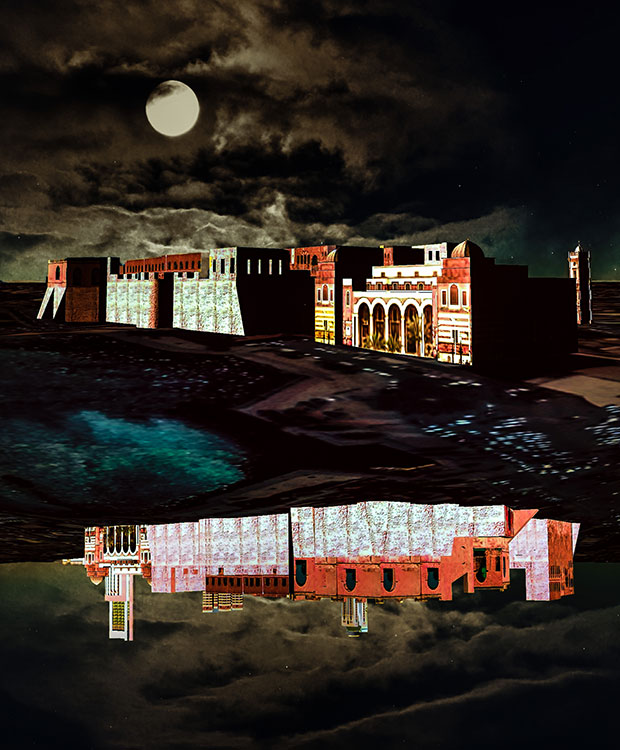
Yoram Kupermintz (Israel), Casablanca, photo processed using Google Earth software, lightbox
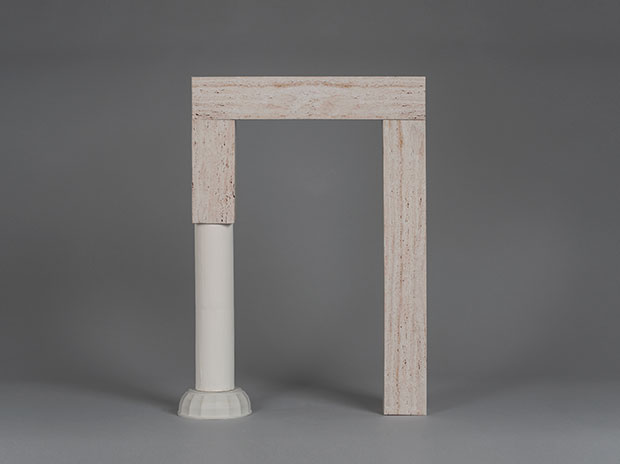
Nicolas Lambouris (Cyprus), Propaedeutics on Memorial Structures Vol. 3, 2018
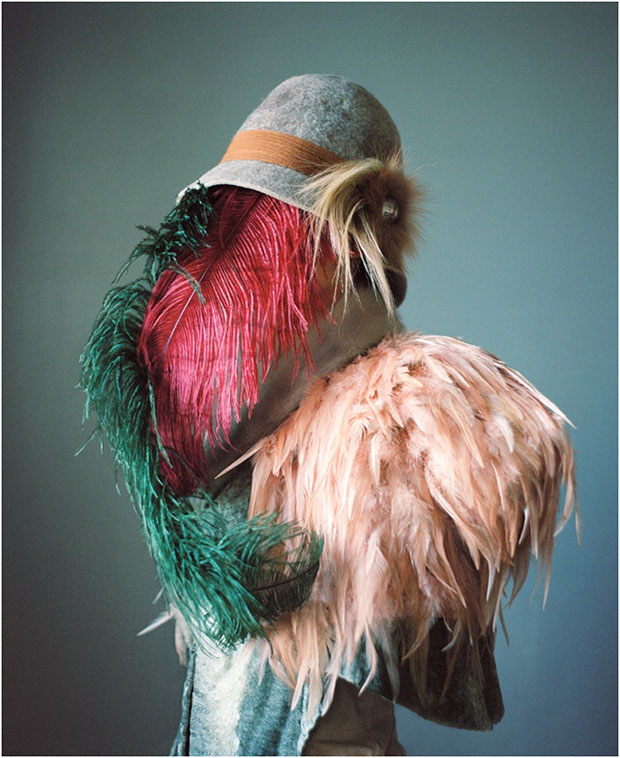
Marie Hudelot (Algeria/France), Heritage, 2013
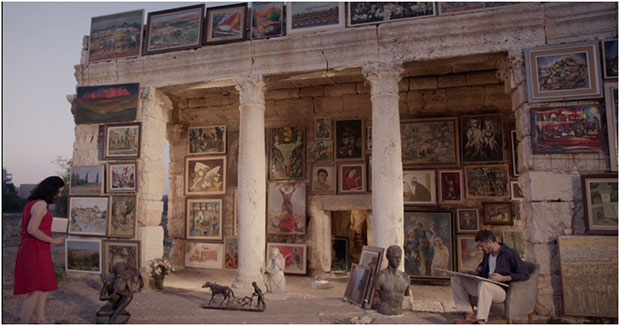
Dana Levy (Israel), Impermanent Display, video, 6:50 minutes, 2014
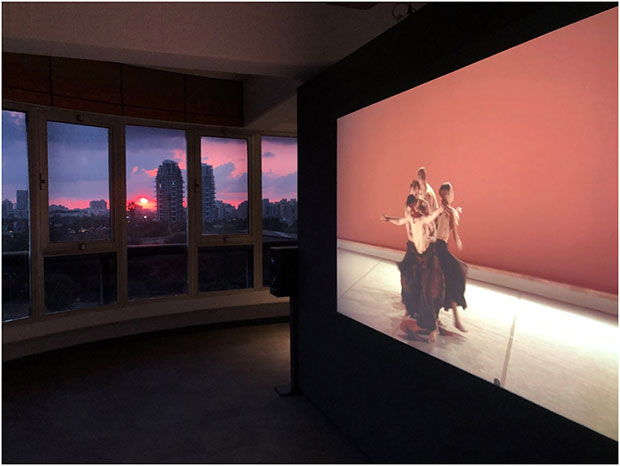
Vertigo Dance Company (Israel), Paradiso, video-sound, 15:30 minutes, 2021, in collaboration with Itamar Doari (Israel)
Fragments and Fire
Within the framework of Photomenta, the Glass Pavilion hosts works by photographers from Israel, Albania and France. Presented at the entrance to the Pavilion is a series of photographs featuring piles of glass shards, which were gathered in order to be melted and used to produce bottles. The photographs were taken at the Phoenicia Glass Works in Yeruham, Israel’s largest glass factory.
The projection room features an allegorical video work concerned with fragments of childhood memories by means of children’s games. Dsiplayed on the interior of the pavilion is a series of photographs concerned with melting pots, whose central elements are metal and fire.
The Glass Pavilion is home to one of the world’s most beautiful and comprehensive glass collections, and features the products of 3,500 years of creation in glass. The permanent collection invites viewers to embark on a fascinating visual journey exploring the history of glass, while laying an emphasis on its aesthetic, cultural, and social dimensions.
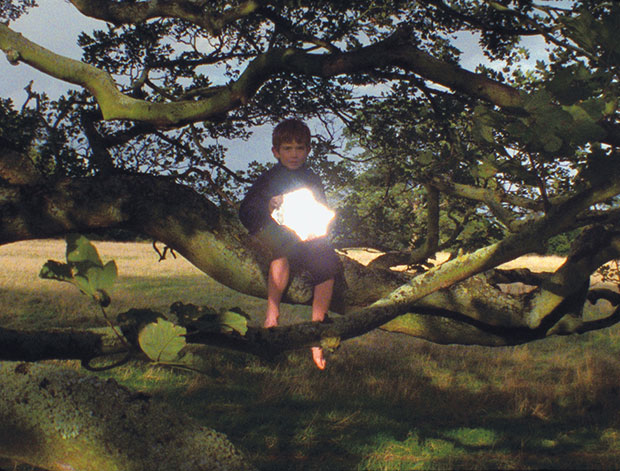
Adrian Paci (Albani/Italy), Per Speculum, video (originally film), 8 minutes, 2006
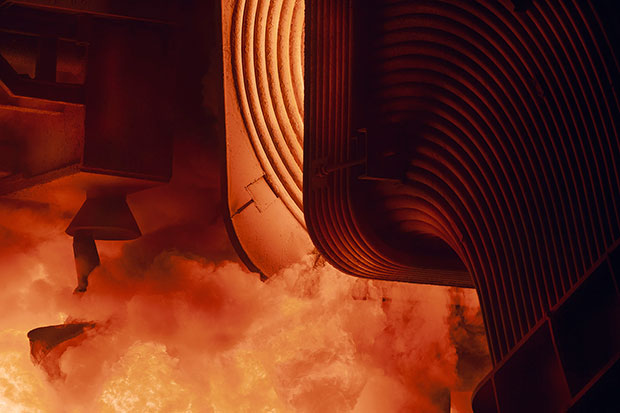
Francesca Piqueras (France), Fire, 2020
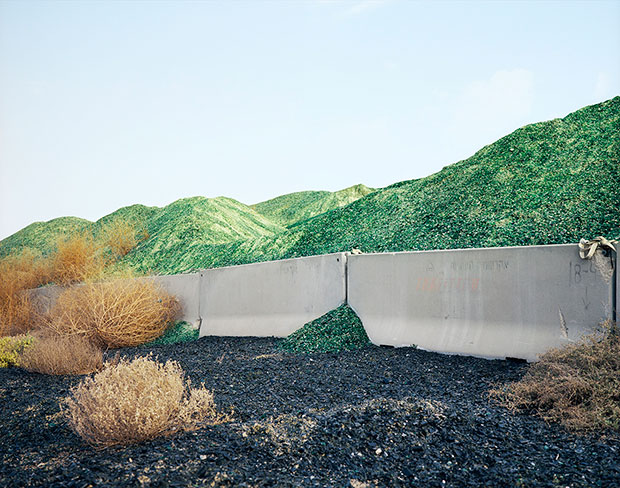
Oded Balilty (Israel), Glass Mountains, 2016
Body. Work
The Man and His Work Pavilion includes four sites – the permanent display in the pavilion, the Bread Courtyard, the Crafts Arcade and the Glassblower’s Room. The pavilion features traditions related to various aspects of local material culture, including ethnographic objects and tools that reflect modes of life, work and agriculture in the land of Israel and the surrounding region.
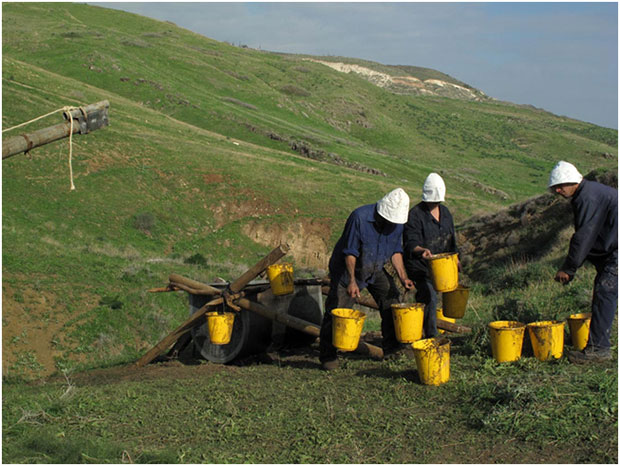
Tochka (Israel), video, 13:20 minutes, 2010
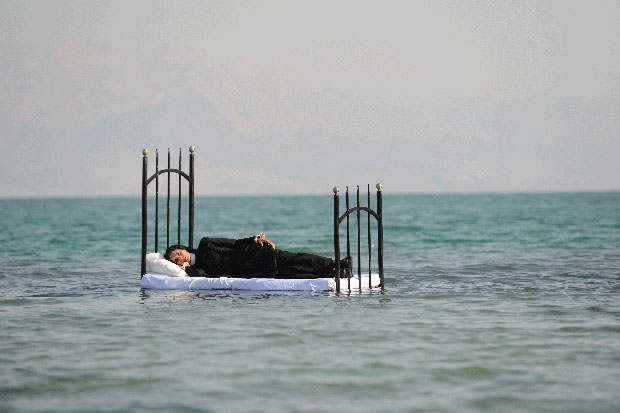
Raida Adon (Acre, Israel), Woman without a Home, video, 27:25 minutes, 2014
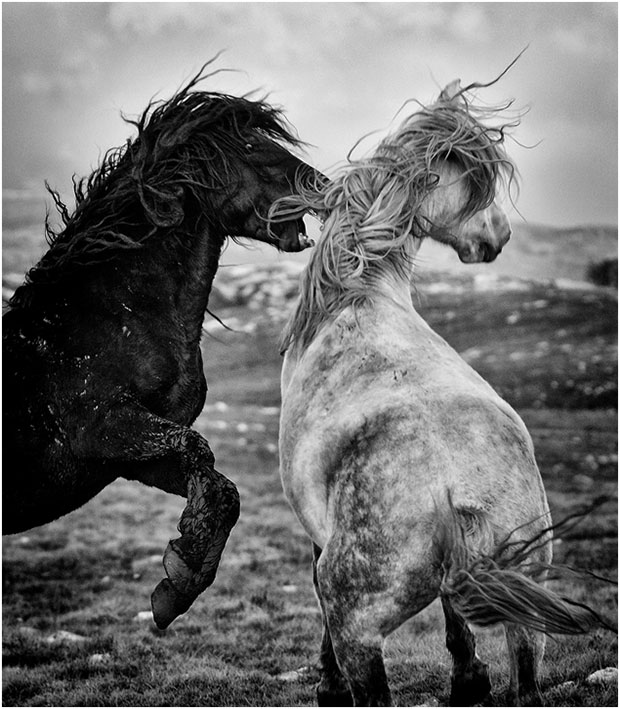
Almin Zrno (Bosnia and Herzegovina), Wild Beauty, 2015
Dancing Towards Evening
In Living Life (2010-2012), Ana Galan (b. 1969) photographs elderly couples throughout the world, inspired by Piero della Francesca’s 15th-century diptych The Duke and Duchess of Urbino. In contrast to the painting, which presents the two figures as frozen and lifeless, Galan infuses life into the composition and presents the elderly couples as filled with vitality: “This project honors those who decide not to remain invisible, and to keep living the moment.” This work is a photographic typology of the gestures of dancing couples, who are captured in profile against a rural landscape suffused with vitality and perhaps even a sense of immortality. Created in Spain, this project also includes photographs taken in the Unites States, Finland and the Philippines.
The Klatchkin Auditorium, named after the stage actor Rapahel Klatchkin, was established with a donation from the actor’s wife, Hadassah. One could well imagine this couple joining the elderly dancers portrayed in this series of photographs.
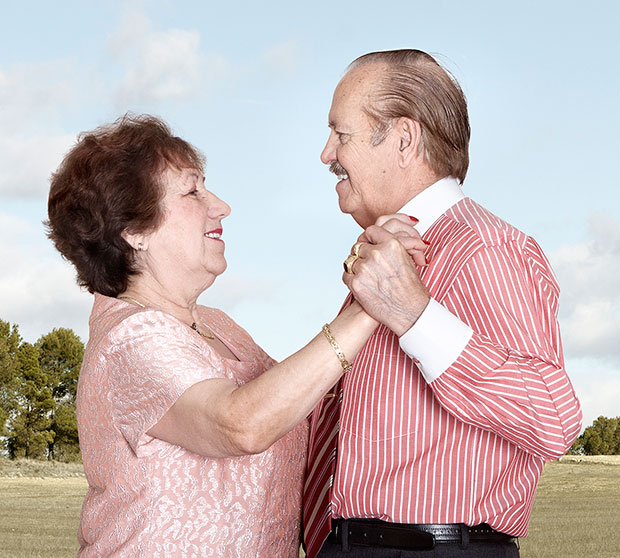
Ana Galan, Living Life, 2010-2012
The Olive Tree
Rafaat Hattab’s video work portrays the artist drawing water into a bucket and watering an olive tree, while fingering its leaves and caressing its trunk. The soundtrack features the song Hub (Love), by the Lebanese singer Ahmad Kaabour. This work appears to be concerned with memory, and with the olive tree as a Palestinian national symbol. As the camera draws away, however, this image is undermined by the revelation that the olive tree and the artist standing beside it are at the center of Rabin Square in Tel Aviv, and that the water comes from the pool surrounding the nearby fountain, adjacent to Tel Aviv-Jaffa Municipality building. The tree is indeed rooted in local earth, yet appears uprooted and foreign within its concrete surroundings, which threaten to suffocate and isolate it within the Israeli metropolis.
The olive press features a range of facilities used to produce olive oil in the land of Israel during thousands of years of agricultural activity: from the vestiges of an Iron Age olive press to a Palestinian olive press.
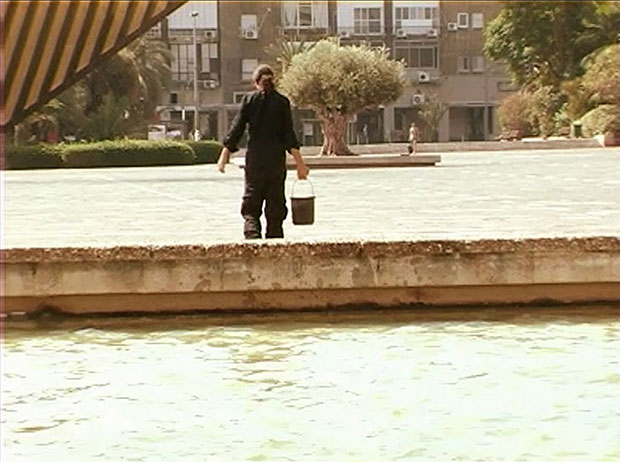
Rafaat Hattab (Jaffa, Israel), Untitled, video, 03:50 minutes, 2009
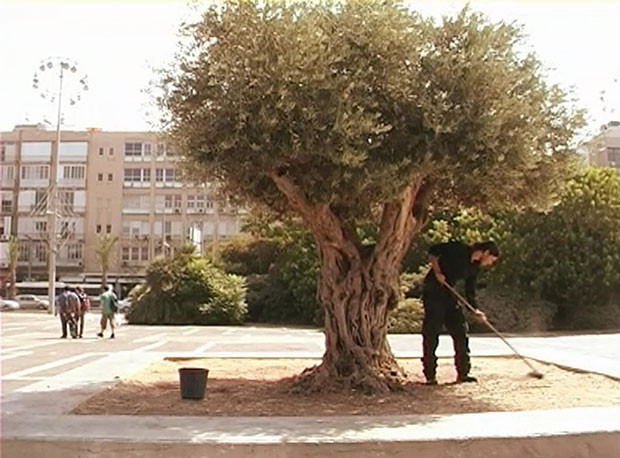
Rafaat Hattab (Jaffa, Israel), Untitled, video, 03:50 minutes, 2009
Grinding Stones
The Flour Mill on the museum grounds hosts two contemporary video works: RAMID, 2015, by Oridt Adar-Bechar, and Factory, 2014, by Maya Geller. Both works were photographed at sites in Tel Aviv and its environs – the first in a vast granary in Bnei Brak, and the second at the Zuckerman Flour Mill in Tel Aviv. The presentation of these works inside the flour mill invites viewers of these contemporary artworks to also consider the historical and architectural story of local flour mills.
The Flour Mill built on the museum site was inspired by the flour mills active in the north of the country. The structure contains parts of ancient mills, including grinding stones, weights and more. Farmers traveled from afar to such flour mills in order to grid the grains they grew. These sites were characterized by a special atmosphere, and became important social and cultural centers.
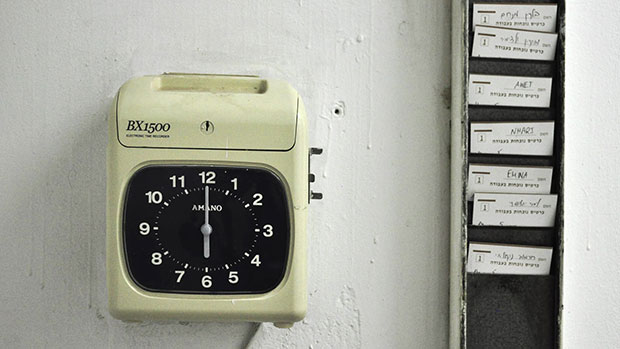
Maya Geller (Israel), Factory, video, 12:00 minutes, 2014
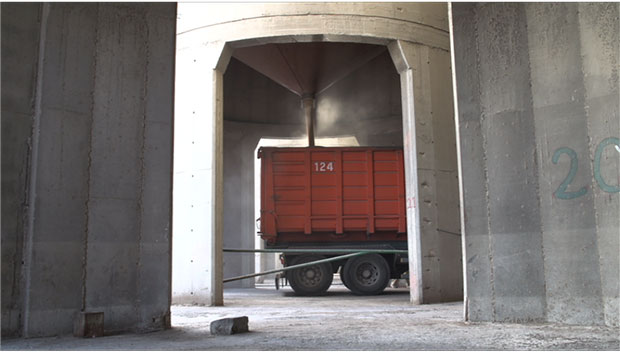
Orit Adar-Bechar (Israel), RAMID, video, 8:00 minutes, 2015

